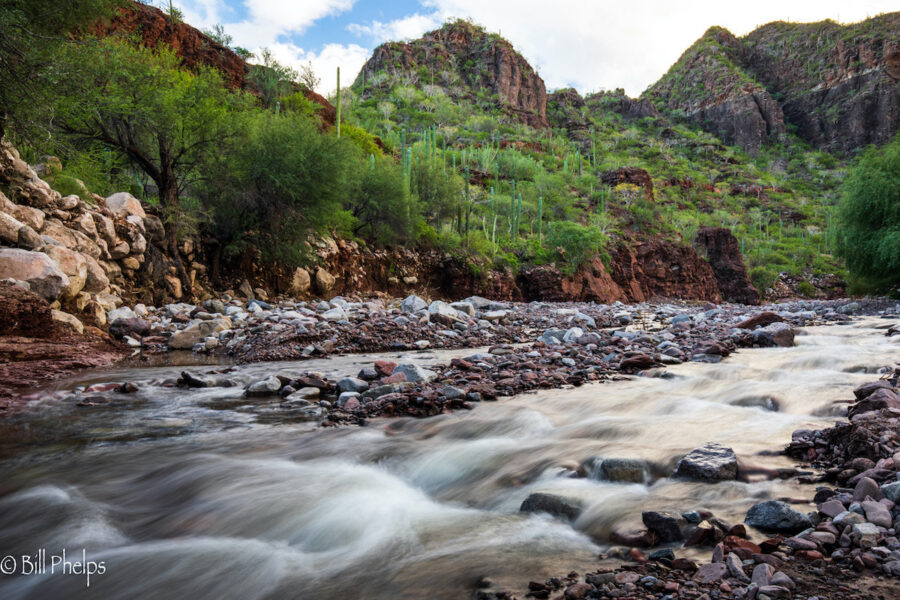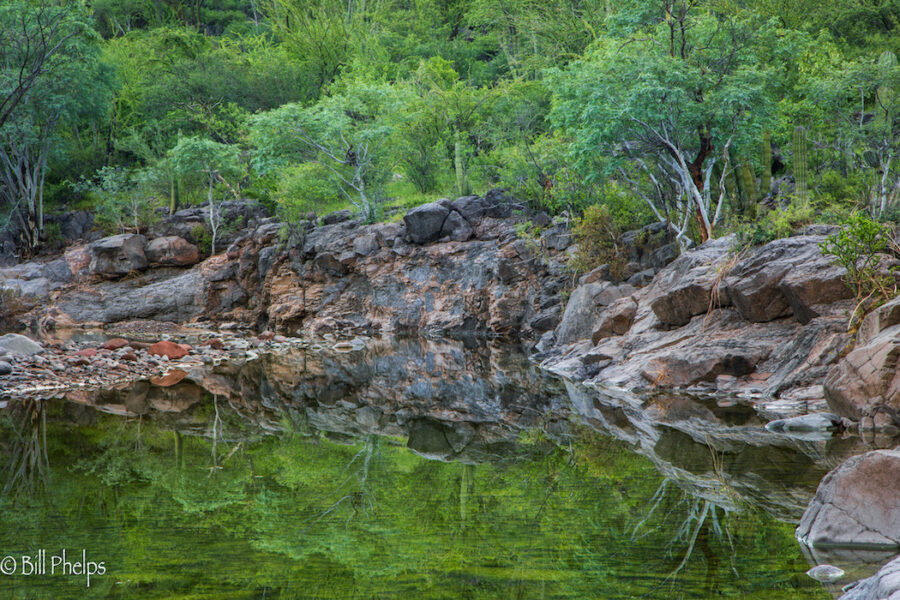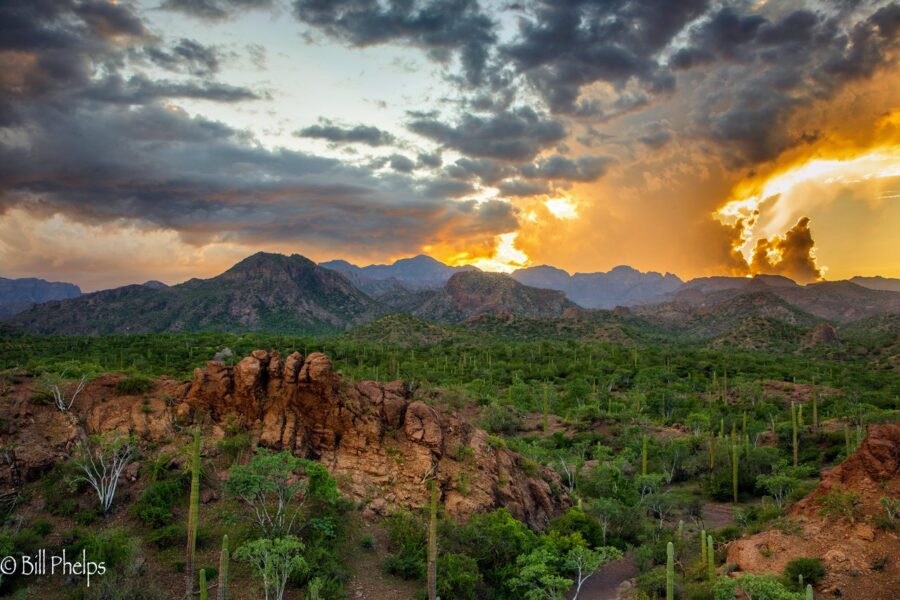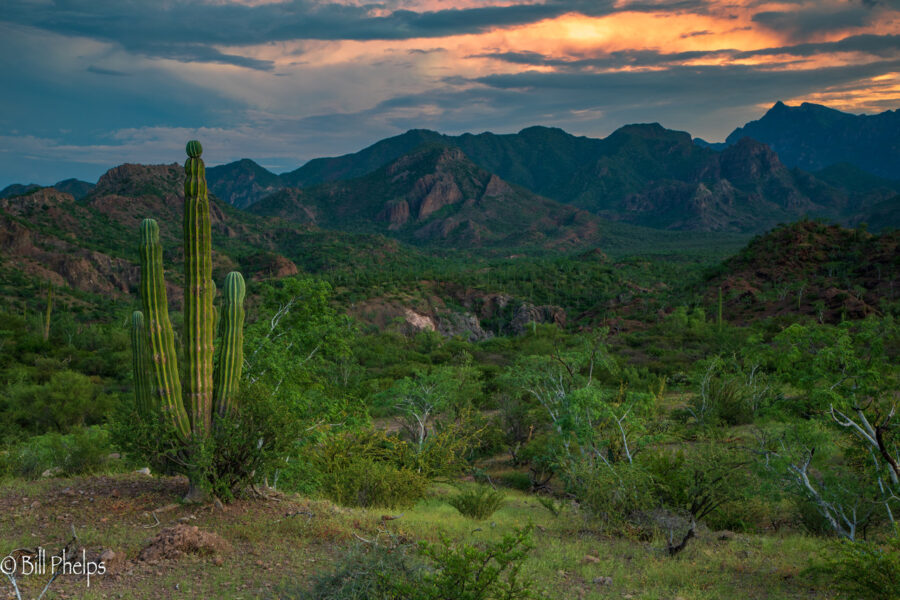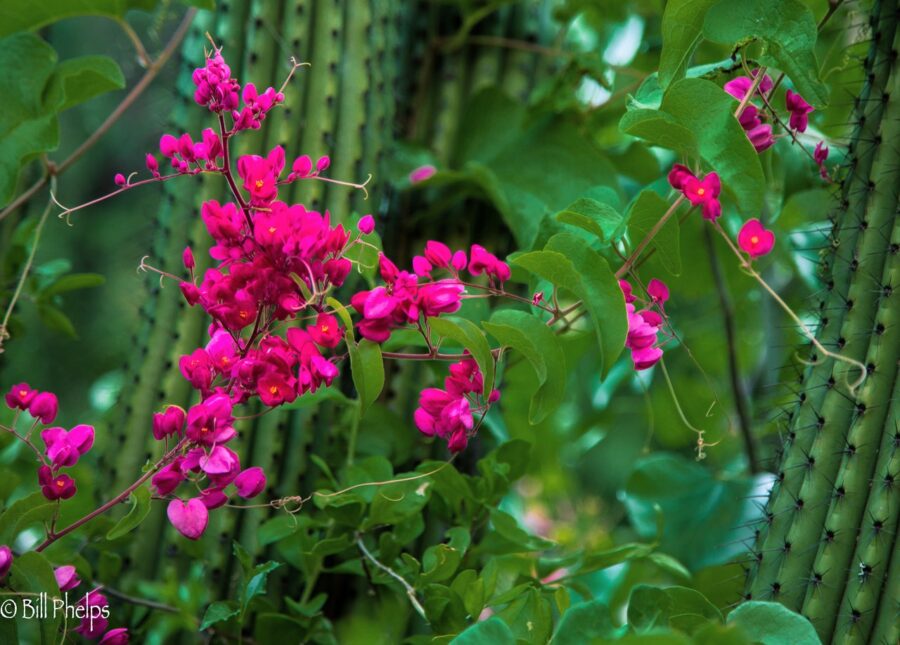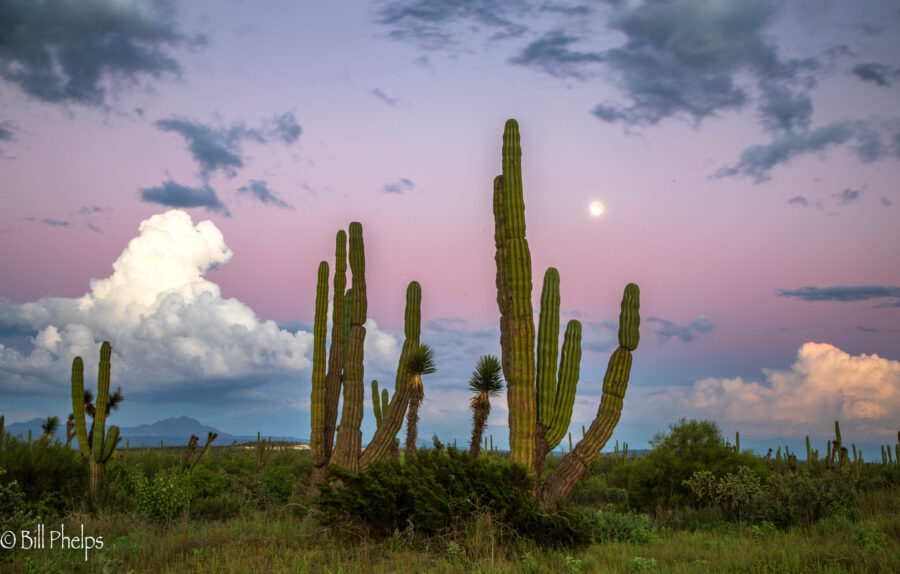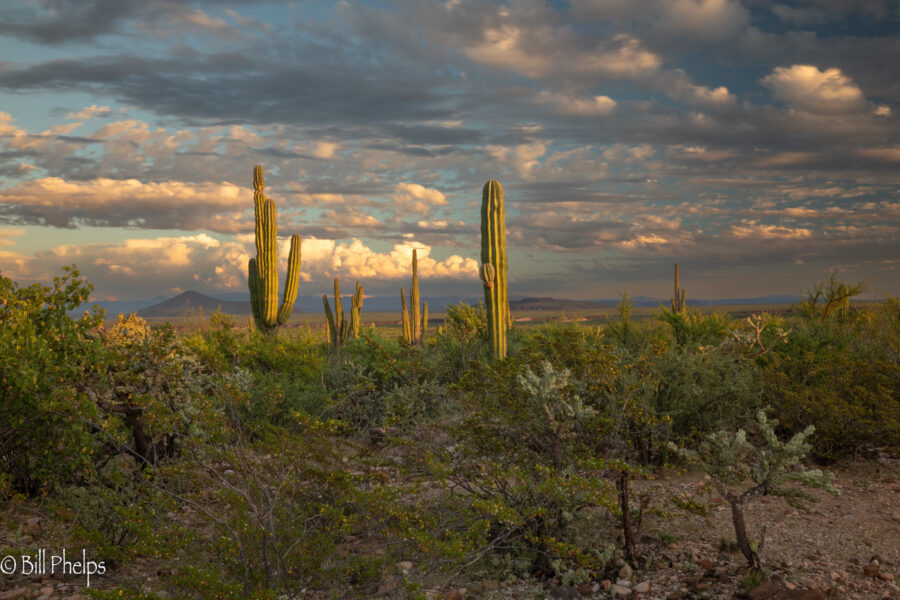By Dave Kelly
We first started hiking Baja fifteen or so years ago. There had been some regular rain that year, so the desert was green and the canyons had lots of waterfalls, pools and swimming holes. Over the past four or five years, up until this year, rain has been scarce, the streams were dried up, the desert was dusty and brown, and wildlife and livestock were suffering.
In the desert, as with everywhere, water is essential for life. Desert plants and wildlife are incredibly adaptable. During dry spells, the desert gets its water from fog, dew, and mist that forms in the cool evenings, and trickles down into the ground. Occasional showers bring a short lived relief, but much of it runs off the dry soil before it can be absorbed.
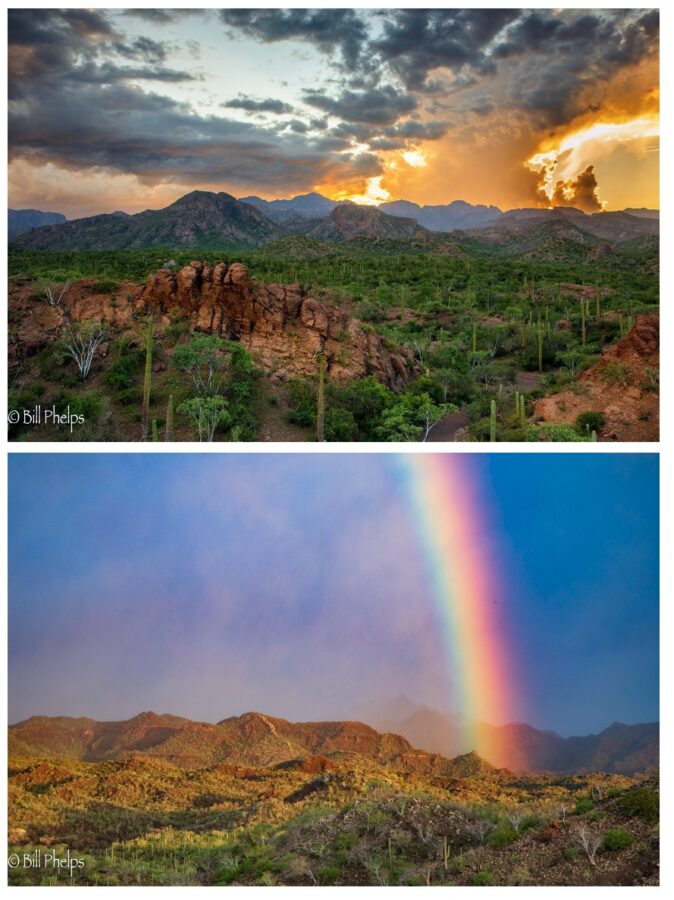
However, the bulk of the ever so important ground water comes from the big tropical storms and hurricanes, that can bring 20 inches or more of rain in just hours.
While hurricanes bring much needed rain, they also bring high winds and property damage. The worst in recent years here in Baja was Hurricane Odile in September of 2014, causing several deaths, severe damage to highways, bridges, loss of livestock, and property losses in excess of 1 billion dollars.
This year, Hurricane Kay and several small tropical storms caused some flooding, road washouts and some local damage, but it also brought much needed rain.
The desert here around Loreto has become a sea of color, with green grasses and colorful flowers all coming to life after years of dormancy. Canyon streams and water falls have started flowing once again. Frogs, fish, and crayfish appear from the mud. The desert is reborn.
Large amounts of rain also alter the terrain. Giant rocks are moved, sand and gravel are scoured from up stream to be deposited downstream, trees are uprooted and taken out to sea. Where there once were desert roads, now there are streams.
Now is a great time to hike and wander through this beautiful landscape. Hiking after rain storms is a great experience, although a challenge as well. Arroyos change, trails disappear, and route finding can be difficult. So take extra care while heading out, take note of landmarks as you go so you are able to find your way back. Mark intersections with a bit of colored tape or a cairn (a small pile of rocks). Never use any type of permanent marker like paint. Bring along a compass, plenty of food and water, and a bit of extra clothing. Remember, cell service is not reliable out in the back country and a desert rescue may take hours or even days, if possible at all.
Enjoy, be safe, leave only footprints and take only pictures.
Photos by Bill Phelps


